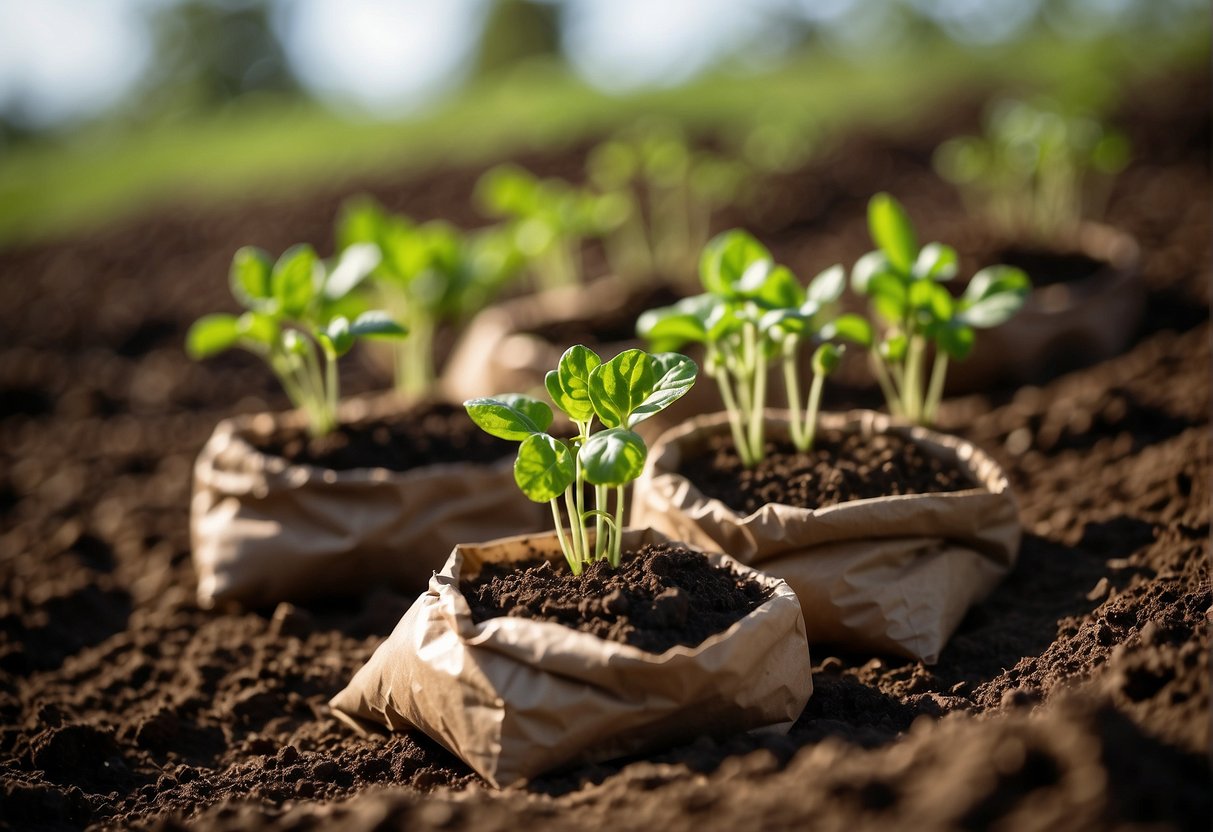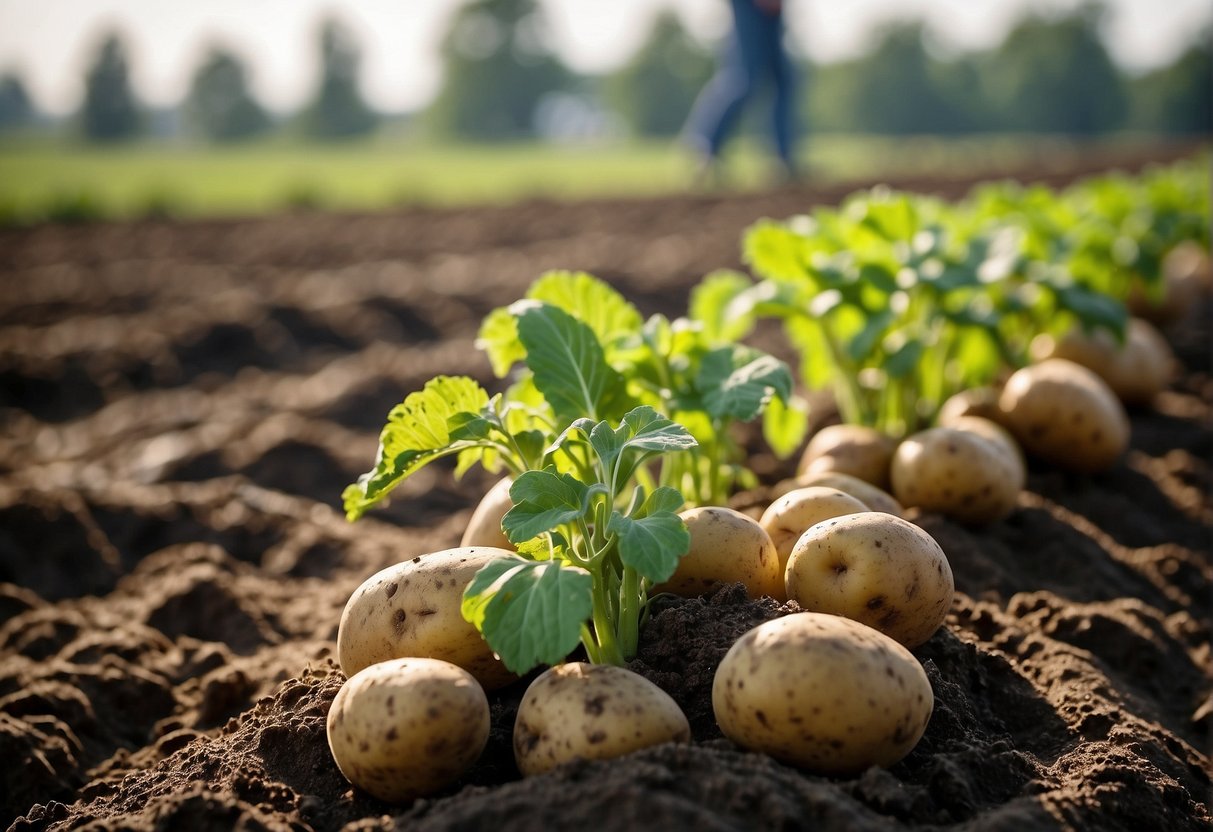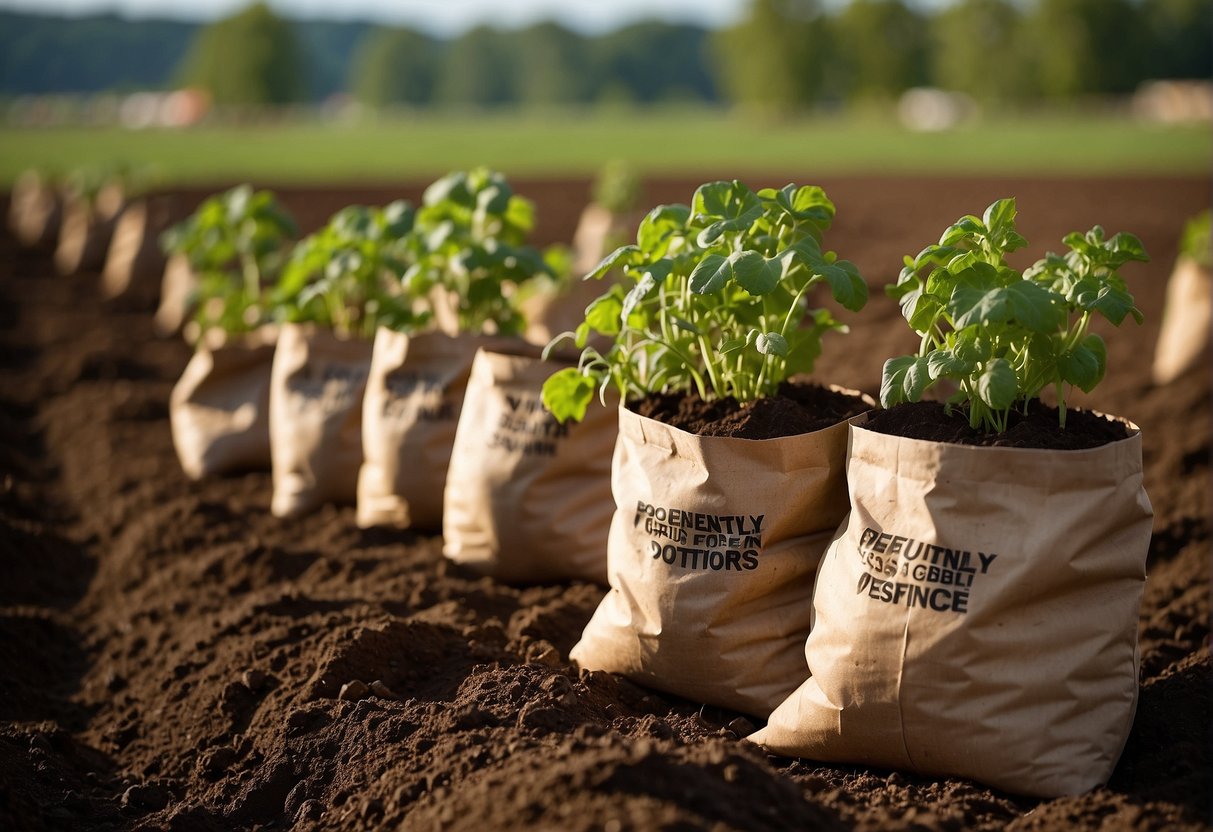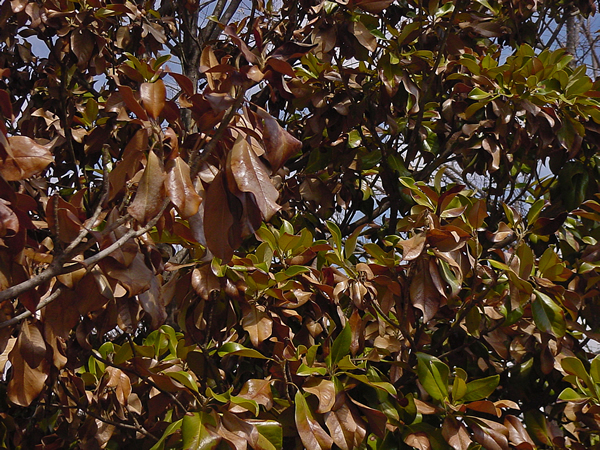Planting Potatoes in Bags: A Step-by-Step Guide
Planting potatoes in bags is a popular method of growing potatoes, especially for those with limited space or poor soil quality. This method involves planting potatoes in bags filled with soil, allowing them to grow in a controlled environment. It is a simple and effective way to grow potatoes without the need for a large garden or specialized equipment.

One of the benefits of planting potatoes in bags is that it allows for easy mobility. Bags can be moved around to take advantage of the best growing conditions, such as sunlight and warmth. This also makes it easier to protect the plants from pests and diseases, as the bags can be moved away from infected areas. Additionally, growing potatoes in bags can help to conserve water and reduce the amount of fertilizer needed, as the soil is contained and can be easily monitored and adjusted.
To plant potatoes in bags, one simply needs a large, sturdy bag (such as a heavy-duty garbage bag), soil, and seed potatoes. The process involves filling the bag with soil, planting the seed potatoes, and watering regularly. As the plants grow, additional soil can be added to the bag to encourage more tuber growth. With proper care and attention, planting potatoes in bags can yield a bountiful harvest of fresh, delicious potatoes.
Choosing the Right Materials

When it comes to planting potatoes in bags, selecting the right materials is crucial for a successful harvest. This section will cover the two main aspects of choosing materials for potato bag planting: selecting the best potato varieties and the types of bags for planting.
Selecting the Best Potato Varieties
Before choosing a potato variety, it is important to consider the length of the growing season and the desired harvest time. Early varieties mature in about 70-90 days, mid-season varieties mature in 90-120 days, and late varieties take over 120 days to mature. It is important to choose a variety that matches the length of the growing season in your area.
Another important factor to consider is the quality of the seed potatoes. Certified seed potatoes are recommended as they are free from diseases and produce higher yields. It is also advisable to choose a variety that is suitable for container planting, as some varieties may not thrive in bags.
Types of Bags for Planting
The type of bag used for planting potatoes is also important. The most common types of bags are burlap sacks and fabric bags. Burlap sacks are affordable and biodegradable, but may not be as durable as fabric bags. Fabric bags are made of sturdy material that allows for good drainage and aeration, and they are reusable.
The size of the bag is also important. 10-gallon bags are suitable for growing one or two plants, while 15-gallon and 20-gallon bags can accommodate more. It is important to choose a bag size that matches the number of potato plants you wish to grow.
In conclusion, selecting the best potato varieties and the right type and size of bag is essential for a successful potato bag planting. By following these guidelines, you can ensure a bountiful harvest of delicious potatoes.
Preparing for Planting
Chitting Seed Potatoes
Before planting, it is recommended to chit the seed potatoes. This process involves placing the potatoes in a cool, bright place to encourage the development of sprouts, also known as eyes. This will help the potatoes to grow faster once planted. To chit the potatoes, simply place them in a tray or egg carton with the eyes facing upwards. Keep them in a cool, bright location for a few weeks until the sprouts are about 1-2cm long.
Soil and Compost Mix
The soil and compost mix is an essential element for growing healthy potatoes. A good soil mixture should be rich in organic matter and nutrients. A recommended mixture is 50% peat-free compost and 50% topsoil. This will provide the potatoes with the necessary nutrients to grow strong and healthy. It is also important to ensure that the soil is well-draining, as potatoes do not like to be in waterlogged soil.
To prepare the soil and compost mix, simply mix the peat-free compost and topsoil together in equal parts. This will create a nutrient-rich mixture that is perfect for growing potatoes. It is also recommended to add some organic matter to the mixture, such as well-rotted manure or compost. This will help to improve the soil structure and provide additional nutrients for the potatoes.
Overall, preparing for planting is an important step in growing healthy and productive potatoes. By chitting the seed potatoes and preparing a nutrient-rich soil and compost mix, you can ensure that your potatoes have the best possible start in life.
Planting and Caring for Potatoes
The Planting Process
When planting potatoes in bags, it is important to choose the right type of bag. A fabric bag with drainage holes is ideal, as it allows excess water to drain out and prevents the soil from becoming waterlogged. Once you have your bag, fill it with a good quality potting mix, leaving about 2-3 inches of space at the top.
Next, it’s time to plant your potatoes. Cut your seed potatoes into pieces that are about 2 inches in size, making sure that each piece has at least one eye. Place the seed potato pieces on top of the soil, spacing them out evenly.
Cover the seed potatoes with another 2-3 inches of soil. As the plants grow, continue to add soil to the bag until it is full. This process is called hilling and helps to prevent the potatoes from getting sunburned or turning green.
Maintaining Potato Health
Potatoes need plenty of sunlight, water, and nutrients to grow healthy and strong. Make sure your potato plants are getting at least 6-8 hours of direct sunlight each day. Water your plants regularly, but be careful not to overwater them as this can lead to rot.
Fertilizer is also important for the health of your potato plants. Granular fertilizer can be added to the soil before planting, and organic fertilizers can be used throughout the growing season. Be sure to follow the instructions on the fertilizer packaging carefully to avoid over-fertilizing.
Keep an eye out for pests and diseases, and take action as soon as you notice any problems. To keep your potatoes disease-free, avoid planting them in the same spot for more than two years in a row.
Harvesting and Storage

Determining Harvest Time
Harvesting potatoes in bags is a rewarding experience, but it is important to know when to harvest them. The ideal time to harvest potatoes is when the plants have died back and the leaves have turned yellow. This is usually around 10-12 weeks after planting. However, if you want small potatoes, you can harvest them earlier.
To determine if your potatoes are ready for harvest, gently dig around the base of the plant with a garden fork. If the potatoes are the size you want and the skins are firm, it’s time to harvest. If the skins are thin and papery, leave them in the ground for a few more days.
Storing Homegrown Potatoes
Once you have harvested your bountiful harvest of homegrown potatoes, it’s important to store them properly to ensure they last as long as possible. Store them in a cool, dark, and dry place, such as a basement or pantry. Avoid storing them in direct sunlight, as this can cause greening and sunscald.
Before storing, sort through your potatoes and remove any damaged or diseased ones. Do not wash them, as this can cause them to spoil faster. Instead, gently brush off any excess dirt with a soft brush.
To prevent sprouting, store your potatoes with an apple or two. Apples release ethylene gas, which inhibits sprouting. Check on your potatoes regularly and remove any that show signs of rotting.
By following these simple storage tips, you can enjoy fresh, delicious potatoes for months to come.
Frequently Asked Questions

What is the ideal size of a grow bag for potato cultivation?
The ideal size of a grow bag for potato cultivation is between 10 and 20 gallons. This size allows enough space for the potato plant to grow and develop a healthy root system.
How many potato plants can be grown in a single grow bag?
A single grow bag can accommodate up to three potato plants. However, it is recommended to plant only two plants per bag to give them enough space to grow and produce a good yield.
What are the steps to make a DIY potato grow bag?
To make a DIY potato grow bag, you will need a large burlap or plastic bag, potting soil, and potato seedlings. First, fill the bag with potting soil and plant the seedlings about 3-4 inches deep. Water the plants regularly and keep the bag in a sunny spot. As the plants grow, add more soil to the bag to cover the stems and encourage more tuber growth.
What are the signs that potatoes are ready to be harvested from bags?
When the potato plants start to die back and the leaves turn yellow, it is a sign that the potatoes are ready to be harvested. Carefully dig through the soil in the bag and collect the potatoes. It is important to harvest them before the first frost.
Can sweet potatoes be grown in bags similarly to regular potatoes?
Yes, sweet potatoes can be grown in bags similarly to regular potatoes. The steps are the same, but sweet potatoes require a longer growing season and warmer temperatures.
What are the benefits of using grow bags with side openings for potatoes?
Grow bags with side openings allow for better aeration and drainage, which can prevent root rot and other diseases. They also make it easier to harvest the potatoes without damaging the plant.

